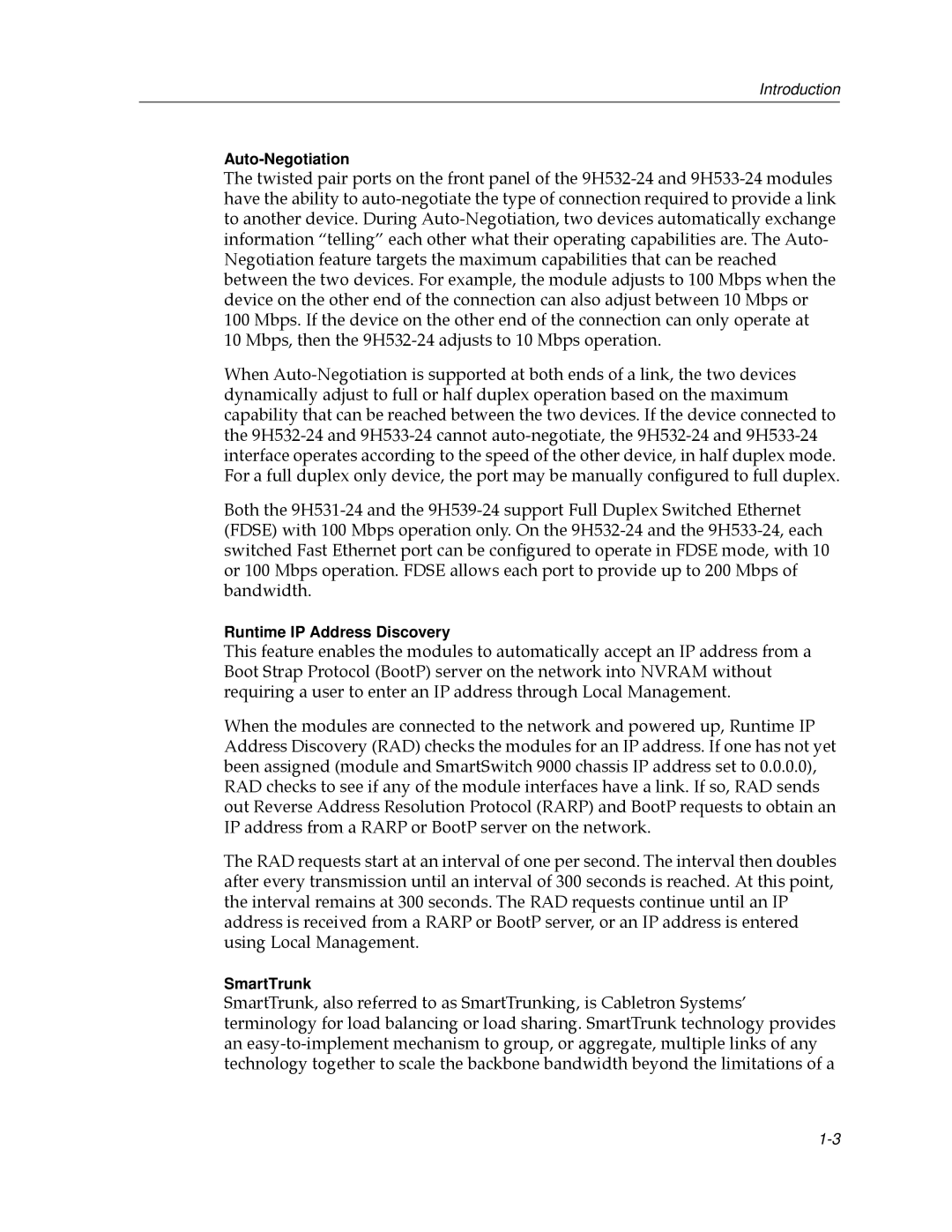Introduction
Auto-Negotiation
The twisted pair ports on the front panel of the 9H532-24 and 9H533-24 modules have the ability to auto-negotiate the type of connection required to provide a link to another device. During Auto-Negotiation, two devices automatically exchange information ÒtellingÓ each other what their operating capabilities are. The Auto- Negotiation feature targets the maximum capabilities that can be reached between the two devices. For example, the module adjusts to 100 Mbps when the device on the other end of the connection can also adjust between 10 Mbps or
100 Mbps. If the device on the other end of the connection can only operate at 10 Mbps, then the 9H532-24 adjusts to 10 Mbps operation.
When Auto-Negotiation is supported at both ends of a link, the two devices dynamically adjust to full or half duplex operation based on the maximum capability that can be reached between the two devices. If the device connected to the 9H532-24 and 9H533-24 cannot auto-negotiate, the 9H532-24 and 9H533-24 interface operates according to the speed of the other device, in half duplex mode. For a full duplex only device, the port may be manually conÞgured to full duplex.
Both the 9H531-24 and the 9H539-24 support Full Duplex Switched Ethernet (FDSE) with 100 Mbps operation only. On the 9H532-24 and the 9H533-24, each switched Fast Ethernet port can be conÞgured to operate in FDSE mode, with 10 or 100 Mbps operation. FDSE allows each port to provide up to 200 Mbps of bandwidth.
Runtime IP Address Discovery
This feature enables the modules to automatically accept an IP address from a Boot Strap Protocol (BootP) server on the network into NVRAM without requiring a user to enter an IP address through Local Management.
When the modules are connected to the network and powered up, Runtime IP Address Discovery (RAD) checks the modules for an IP address. If one has not yet been assigned (module and SmartSwitch 9000 chassis IP address set to 0.0.0.0), RAD checks to see if any of the module interfaces have a link. If so, RAD sends out Reverse Address Resolution Protocol (RARP) and BootP requests to obtain an IP address from a RARP or BootP server on the network.
The RAD requests start at an interval of one per second. The interval then doubles after every transmission until an interval of 300 seconds is reached. At this point, the interval remains at 300 seconds. The RAD requests continue until an IP address is received from a RARP or BootP server, or an IP address is entered using Local Management.
SmartTrunk
SmartTrunk, also referred to as SmartTrunking, is Cabletron SystemsÕ terminology for load balancing or load sharing. SmartTrunk technology provides an easy-to-implement mechanism to group, or aggregate, multiple links of any technology together to scale the backbone bandwidth beyond the limitations of a
1-3
